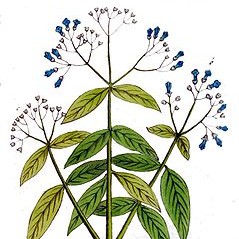Useful things to know about henna for hair colour

Recently, in my own herbwalking journey, I decided to try henna for hair, and learned that there’s more to learn than what they put in the little packages of henna at the health food store!
What did I learn?
1. The hair salon stylists didn’t tell the truth. Big shock right? They said that henna was bad for my hair. Well, henna made my hair feel silky smooth and strong for the first time in ages. I’ve had less of it shedding since using henna too.
2. The little blue boxes of henna from the health food store aren’t really worth the money. The colour doesn’t stay well, it feels a bit like you have sticks in your hair (it’s not a very fine powder), and the instructions could be better.
3. Henna only comes in one colour… red. The other colours are created by mixing other herbs with the henna to create the colour variations.
4. Henna requires three things to work really well: time, acid, and heat
• Time – the longer it’s on the better henna works (the better the colour stays)
• Acid – many henna skin artists use lemon juice (or so I’m told), which is acidic, to mix with their henna instead of water.
• Heat – henna bonds better to hair with heat, which is why many instructions say to wear a shower cap while you wait the allotted time. This holds body heat in so that the henna can do its thing.
Tips and ideas for using henna
So, there is a lot of playing room in using henna for hair. You can change the amount of time that you leave it on to see if that works better for your hair.
You can mix your henna with water, or any of a variety of things to increase its acidity, such as vinegar, lemon juice, or tea. Tea is a good one because it contains tannic acid, and the tannins also create a brown colour. If you have blond to light brown hair you might choose lemon juice. If you have dark hair you might use tea. Be aware that the higher acidity also increases the amount of red that your hair will have. I know… I tried it. I preferred mine with tea rather than vinegar.
You can also mix your henna with other herbs (or buy it already mixed). Some of the plants used? Indigo, Cassia, Chamomile, Sage, Tea, elderberries, and Comfrey are just a few.
It may seem strange to use indigo because it creates a blue colour, but when mixed with henna it can be very good for dark hair. Elderberries were a traditional dye for hair used by the ancient Romans to keep their hair black.
Sage, Comfrey, and tea are great for brown hair.
Chamomile is great for lighter hair.
So, have fun with your henna and enjoy the wonderful feeling hair that you will have when you use henna for hair.
Please share what you have learned about henna in the comments section.

